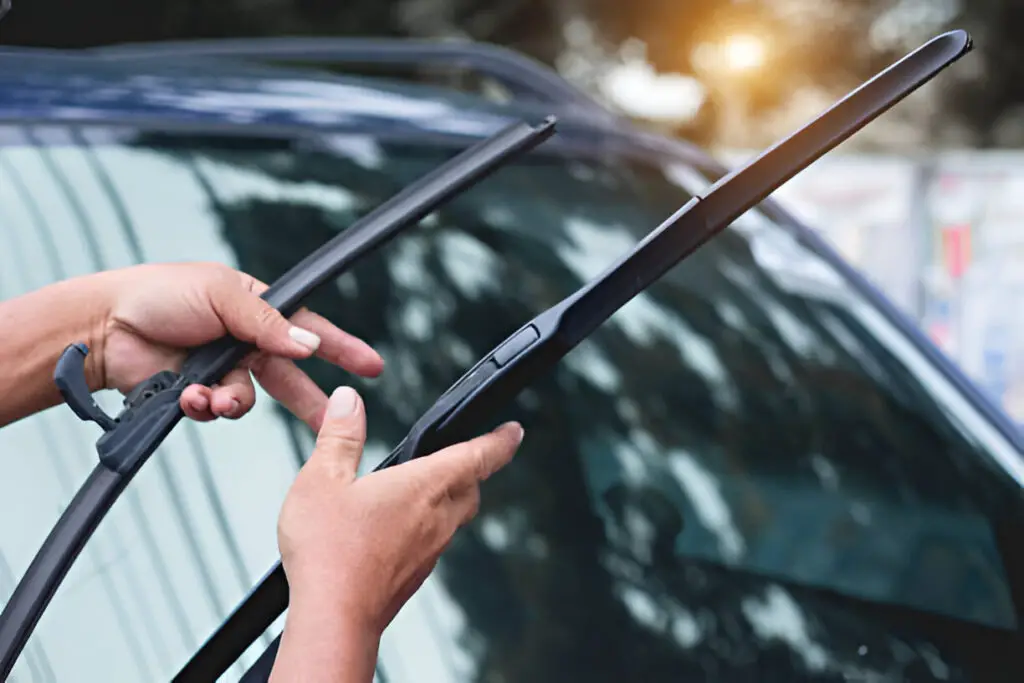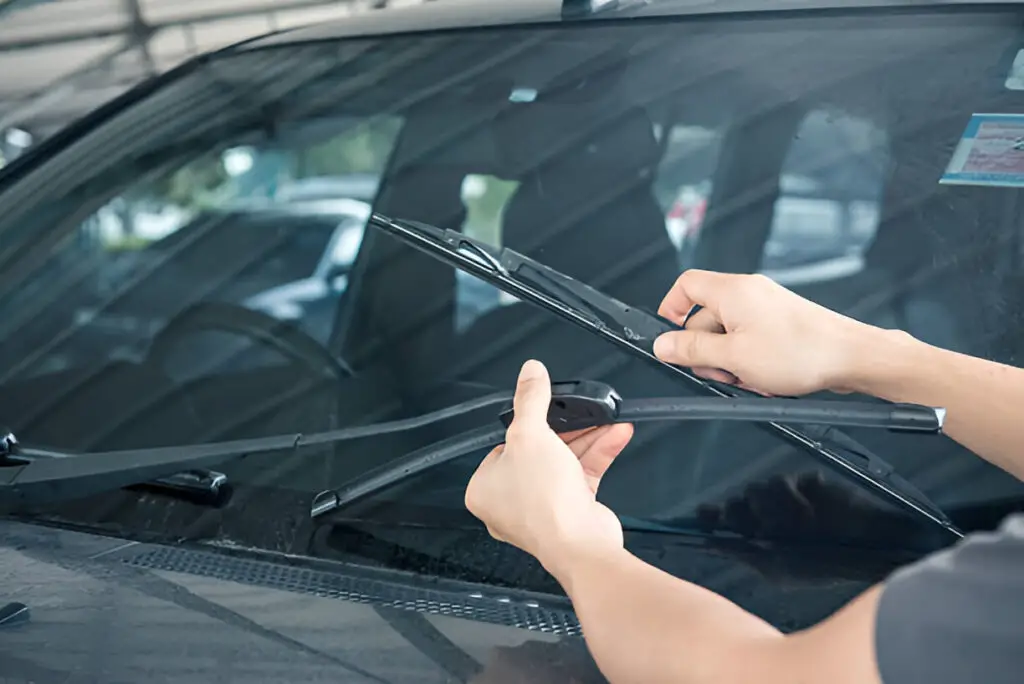Windshield wiper rubber replacement is a quick, affordable way to restore wiper performance. Replacing worn rubber ensures clear visibility and safer driving in all weather. It’s an easy DIY task that helps maintain your wipers without needing full blade replacements.
Windshield wipers are a small yet crucial component of your vehicle. They ensure that you have a clear view of the road, particularly during adverse weather conditions like rain, snow, and sleet. However, like any other part, windshield wipers wear down over time, and the most common issue is the deterioration of the rubber that makes contact with the windshield.
Replacing the rubber is an affordable and easy way to restore your wiper’s functionality without replacing the entire blade assembly. This article provides an in-depth guide to windshield wiper rubber replacement, covering everything from signs of wear to the step-by-step replacement process.

Contents
Windshield Wiper Rubber and Its Importance
Windshield wiper blades are composed of three primary parts: the arm, the metal or plastic blade, and the rubber refill. The rubber is the part that physically wipes away water, debris, or dirt from your windshield, ensuring you can see clearly.
Over time, this rubber can become hard, brittle, or damaged, rendering it ineffective at cleaning the windshield. Damaged or worn wiper blades can leave streaks, cause annoying noises, or even scratch the windshield, which could obstruct your view while driving.
Why the Rubber Needs Replacement
Rubber components in vehicles, such as tires, hoses, belts, and seals, wear out over time due to various factors, making replacement necessary. Here are some reasons why rubber needs to be replaced:
- Environmental Factors: Wiper rubber deteriorates because of environmental factors such as UV rays, extreme temperatures, and exposure to chemicals in the air. Over time, the rubber hardens and loses its flexibility.
- Wear and Tear: Wipers endure significant wear and tear, especially during rainy or snowy seasons. Abrasion from dust, dirt, and road debris can cause the rubber to degrade.
- Inconsistent Performance: As the rubber deteriorates, it can cause the wipers to function inconsistently, leaving streaks on the windshield or missing areas altogether.
Replacing the rubber part instead of the entire wiper blade is a cost-effective solution that extends the life of your wiper system while ensuring optimal performance.
When to Windshield Wiper Rubber Refill
Here are common indicators that your windshield wiper rubber needs to be replaced:
- Streaking: If your wipers leave streaks across the windshield, the rubber might not be making full contact with the glass.
- Chattering or Skipping: When the wiper rubber hardens, it loses its flexibility, causing the wiper blade to chatter or skip across the windshield instead of smoothly gliding.
- Squeaking Noise: A loud squeaking sound can signal that the rubber is too old or dry, which can eventually scratch the windshield.
- Cracks and Tears: Visually inspect the rubber for any signs of cracks, tears, or splits. Damaged rubber will not effectively clear the windshield.
- Inconsistent Water Removal: If parts of the windshield are still wet after the wipers pass, the rubber may have become uneven or worn out.
How Often Should You Replace Wiper Rubber?
On average, it is recommended to replace wiper rubber every 6-12 months, depending on your driving environment and weather conditions. However, if you live in an area with frequent rain, harsh sun, or extreme temperatures, you may need to replace the rubber more often.
Guide to Windshield Wiper Rubber Replacement
Replacing windshield wiper rubber is a simple process that you can perform without special tools. Here’s a step-by-step guide to help you through the replacement process:
Tools Needed:
- New rubber refills (ensure they match the length and style of your current wiper blades)
- A pair of pliers or a small flat-head screwdriver (optional, depending on your wiper design)
- A clean cloth
Steps 1: Measure the Length of Wiper Blades
Before purchasing replacement rubber, measure the length of your wiper blades. Standard lengths are usually between 16 and 28 inches. It’s crucial to get the correct size for a proper fit.
Steps 2: Remove the Wiper Blade Assembly
Lift the wiper arm away from the windshield until it locks into place. This will give you full access to the wiper blade. On most cars, there’s a small tab at the joint where the wiper blade connects to the arm. Press this tab and slide the wiper blade off the arm.
Steps 3: Remove the Old Rubber
Carefully remove the old rubber by sliding it out of the metal or plastic wiper frame. Some blades will have metal or plastic clips securing the rubber in place. If your blade has these, use a flat-head screwdriver or pliers to remove them gently.
Steps 4: Install the New Rubber
Slide the new rubber into the same slot where the old rubber was attached. Ensure the rubber fits snugly into the frame, and reattach any clips or locking mechanisms. Check that the metal spine (if applicable) is correctly aligned with the grooves in the rubber refill.
Steps 5: Reattach the Wiper Blade Assembly
Once the new rubber is in place, align the wiper blade with the wiper arm and slide it back into position. You should hear a click when the blade locks into place.
Steps 6: Test the Wipers
After the installation, lower the wiper arm back onto the windshield and test the wipers by running them with water on the windshield. Make sure they are functioning smoothly and clearing the windshield effectively.

Additional Tips:
- Inspect Regularly: Even if your wipers seem to be working fine, inspect the rubber periodically for signs of wear, especially before long trips.
- Avoid Using Wipers on a Dry Windshield: This can cause premature wear of the rubber, as the friction between the dry windshield and rubber can lead to damage.
- Keep Your Windshield Clean: Dirt and grime on the windshield can act like sandpaper, wearing down the rubber faster.
Benefits of Replacing Just the Rubber
Replacing just the rubber components of a vehicle, such as the rubber seals, bushings, or belts, offers several benefits. This targeted approach can enhance vehicle performance, extend component life, and reduce costs. Here are the key benefits:
- Cost Efficiency: Replacing only the rubber refill is much cheaper than purchasing an entire wiper blade assembly.
- Environmentally Friendly: By replacing the rubber, you reduce waste, as you’re not discarding the plastic or metal blade.
- Consistent Visibility: New rubber ensures that your wipers are clearing the windshield effectively, enhancing your visibility and safety while driving.
Frequently Asked Questions
Here are some FAQs about how to replace windshield wiper blades rubber –
1. Can I replace just the rubber on my windshield wipers instead of the entire blade?
Yes, you can replace just the rubber part of the wiper blade, which is often referred to as a “rubber refill.” Many wiper blades are designed to allow easy replacement of the rubber, making it a more cost-effective solution.
2. How do I know which rubber refill to buy?
Measure the length of your current wiper blade to ensure you purchase the correct size. Additionally, consult your vehicle’s manual or check with your local auto parts store for the recommended wiper rubber for your car.
3. How often should I replace my windshield wiper rubber?
It’s recommended to replace wiper rubber every 6-12 months, or sooner if you notice any signs of wear such as streaking, skipping, or squeaking.
4. Can I replace the wiper rubber myself, or do I need to take my car to a mechanic?
Replacing wiper rubber is a simple task that most car owners can do themselves. With minimal tools and a little time, you can replace the rubber in a few easy steps.
5. Why are my new wiper blades still leaving streaks on my windshield?
If your new rubber is still leaving streaks, it could be due to improper installation, a dirty windshield, or residue left by the previous wipers. Try cleaning both the wipers and the windshield thoroughly before assessing performance.
Conclusion
Windshield wiper rubber replacement is an essential yet often overlooked aspect of vehicle maintenance. By ensuring that your wiper blades are functioning properly, you protect not only your vehicle but also your safety on the road. The process of replacing just the rubber is simple, cost-effective, and environmentally friendly. Regular inspection and timely replacement of the rubber can save you from the hazards of impaired visibility during rain, snow, or dusty conditions.